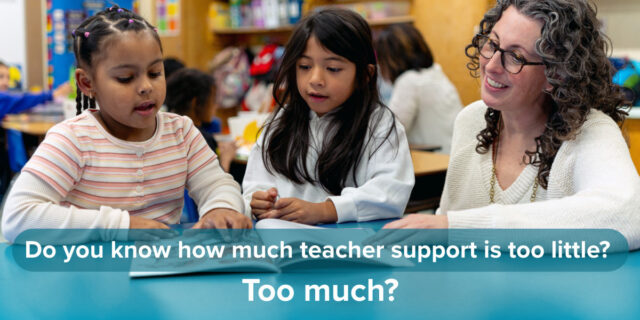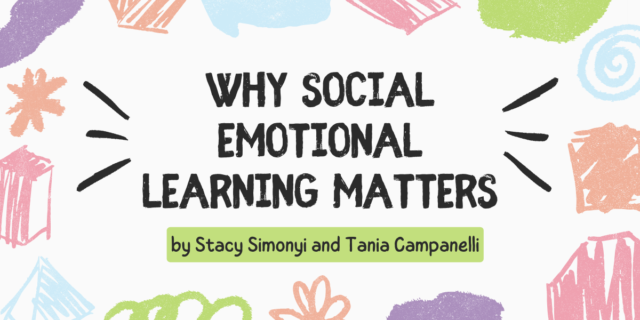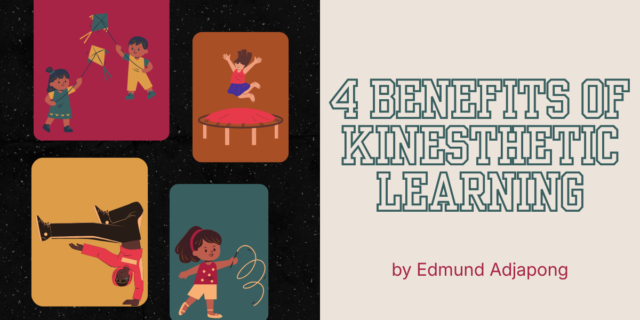
What do you do when you’ve tried book clubs, and they just didn’t work?
Today on the Heinemann Podcast we’re joined by Sonja Cherry-Paul and Dana Johansen, co-authors of “Breathing New Life into Book Clubs.” In a recent article on the Heinemann Medium blog, Sonja and Dana wrote about some of the common roadblocks that teachers encounter when leading book clubs. They say that “organizing clubs, managing them, determining the instruction that students need, and trying to empower students to take the reins of their own reading journeys, can feel daunting. But we cannot throw in the towel.”
We started our conversation asking, “why can’t we give up on book clubs?”
Below is a full transcript of this episode.
Dana: I think over the years Sonja and I have been using book clubs in our classrooms ever since we started teaching and it's the one thing that we've just seen has helped students flourish with reading and find joy for reading. It really matters in their readerly lives. We see that these are spaces that transform their attitudes toward reading through choice and ownership and we see their reading skills strengthen because they're transferring the instruction from class to the books that they're reading and discussing with peers. We see, oh my gosh, so much energy as they come to life as readers in the classroom. They love journeying through texts with their peers. Reading is such a social experience to gain people's different perspectives on what's going on with the characters and the plot and the moves that the authors are making. It's a really exciting place where really great conversations can happen. Students can really get to know each other as readers and their thoughts about texts. It's a really, really joyful experience.
Sonja: Yeah. I think adolescence, it's such a critical time for reading. We see now more than ever, our kids' schedules are jam packed with so many responsibilities, the responsibilities of schools, the responsibility of homework. There's just a lot of pressure on students these days. The thing that I'm concerned about is with all of this pressure comes this loss of power that students have around their academic lives, this lack of autonomy to make choices. When Dana and I think about book clubs, this is the joyous space where kids get to exert their power around reading. The books that are available to kids right now are just so exciting and kids do want to read them. I think that book clubs are the spaces where kids get to make those choices. Too often in teaching, we're imposing upon students what they should read and not only what they should read, but what they should think about what they read.
We get caught up in the practice of teaching a book. I've just heard from so many educators who the thinking is I teach insert title here, whatever it is, The Outsiders, or I teach To Kill a Mockingbird, or I teach The Giver. Dana and I, we often talk about that. No, we don't teach books. We teach children and we teach reading. I think when we get caught up in the teaching of a book, we alienate of our students. For me, book clubs is that space where we're inviting all kids into this magical world of books and where kids have choice and they have autonomy over what they're going to read and how they're going to read it.
Brett: How do we then take that and breathe that new life into book clubs?
Dana: I think one of the central ways is with choice and ownership. The first thing we need to do is really get to know our students as readers, and like Sonja was just saying, really find out what they want to read and then get those books. It's very hard getting books into our classrooms. We have to be strategic and work together and find ways to get the titles that students want and not limit ourselves. We want to find out what they're interested in in terms of graphic novels, nonfiction and fantasy, and not limit ourselves to the traditional book club models where it's historical fiction and realistic fiction. We want to branch out and embrace our students' interests.
Then we want to honor their choices and give them ownership in their club in a variety of different ways. Another thing we want to do is we really want to make sure that as teachers we're stepping back and allowing our students ownership of their clubs. What this means, very bluntly, is that there are no assigned roles, no turn-taking rules. There are no limits on ways that kids can respond, and keeping the joy of reading central to the clubs and honoring their choice and ownership.
Sonja: I think to pick up on what Dana's saying, the biggest way you can breathe new life into book clubs, I think, is for teachers to reevaluate their role, their stance in the classroom around book clubs. When Dana says no roles and no rules, this doesn't mean that we're allowing clubs to just run rampant and to run a muck in our classrooms, but what it does mean is that we're reevaluating and adjusting our own goals and really putting our students central in this experience. The more that we sort of impose these rules and structures, we've found the more stagnant the book clubs become. They sort of peter out. If we could get teachers to just think about book clubs that they might be a part of in their own lives and tap into that experience and lean into that in the classroom rather than be fearful of it, I think that they will see that book clubs become this incredible experience for kids and that's what they'll want to do all year long.
We sort of sell our kids short, I think, when we impose the ways that they should exist in a book club as opposed to letting them take ownership of it and read and enjoy reading without us feeling like we have to micromanage every single moment of a club.
Dana: This reminds me actually of a conversation I was having this week with some teachers who I work with. They were so excited because the book clubs that they're using with third graders, the third graders, they all have their own book in the club. It's really a sort of out of the box model and all the kids come together and they share what's going on in their books and they're so excited each week to say, "Hey, this is what I'm reading. This is what I'm excited about. I want to share my ideas with you. I'm not sure where my book's going, but this is my prediction and I really want to hear about your book and maybe I want to read your book next." They've really just breathed new life into book clubs that way. It's really cool, really exciting.
Brett: Sonja, you mentioned just a second ago about being mindful about not micromanaging the book clubs. Dana, you mentioned earlier than that that we need to be mindful about the roles of students in the book clubs. With those two ideas in mind, what is often misunderstood about our role as teachers in the book club?
Sonja: I think one of the big misconceptions is that when book clubs are up, the teachers really need to track exactly what kids are reading, how many pages they're reading, whether or not they've comprehended every line of the text. Are they writing a response every time they sit down to read? Are they having the most profound conversations every time the club meets? The reality is no. We could just let go of that. No, they're children. They're kids. Sometimes, yes, they're talking about pizza for lunch and sometimes they are talking about soccer practice. I think that's all typical kid stuff. If we could just sort of relax ... There's something around book clubs that makes teachers become so anxious, like they don't expect them to be kids anymore.
That being said, we want to make sure that kids are reading and they are reading when they get to choose what they read. We want to make sure that we're reminding the kids to support one another so that if someone is having a challenge, "I have this big test coming up," or, "Something's going on at home," what can we do as a club to support one another? We want kids to tap into their own sense of humanity and to demonstrate that as part of the club.
Dana and I have this sports analogy for the role of the teacher in clubs. I think it works so beautifully because when we look at kids and if they're, again, on the soccer field or they're playing basketball or volleyball and they're at practice, there is a time where the coach is giving maybe a 15, 20, 30, maybe even 40 minute, having a discussion around an instructional play or a move or a kick or hit or how they're supposed to engage in the game, but when it's time for them to actually play, you don't have that time anymore. You get maybe five minutes to coach them off to the side and then you have to send them back out to play.
Dana and I want teachers to think about book clubs as the game and the game is on. Now is not your time to deliver a 45 minute ... I don't know when you should be delivering a 45 minute speech ever in the classroom, but it's certainly not during book clubs. You've got a couple of minutes to go in there and make a difference with that club and figure out what's going to be the best use of your time with them that's going to help move them forward. I think that is what we'd like teachers to think about is your role is of a coach and your job is to get in and get out and let the kids do the work.
…
Learn more about Breathing New Life into Book Clubs at Heinemann.com
 Follow us on Instagram @heinemannpub to stay up to date on the latest books, your favorite authors, and upcoming events!
Follow us on Instagram @heinemannpub to stay up to date on the latest books, your favorite authors, and upcoming events!
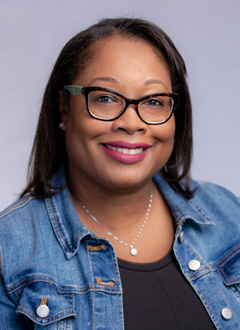 Sonja Cherry-Paul, EdD, has taught middle school English for twenty years. She is a literacy consultant who served on the Jane Addams Children’s Book Award committee for ten years. Sonja leads presentations about literacy at national conferences and provides professional development for educators on reading and writing instruction and racial literacy.
Sonja Cherry-Paul, EdD, has taught middle school English for twenty years. She is a literacy consultant who served on the Jane Addams Children’s Book Award committee for ten years. Sonja leads presentations about literacy at national conferences and provides professional development for educators on reading and writing instruction and racial literacy.
She is the coauthor, with Dana Johansen, of the titles Teaching Interpretation and Flip Your Writing Workshop.
Follow Sonja on Twitter @LitLearnAct
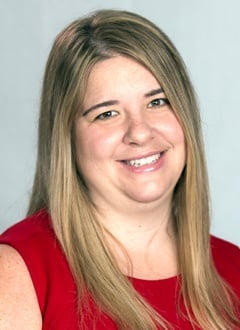 Dana Johansen has taught elementary and middle school for more than fifteen years. Dedicated to the ever-expanding applications of technology in the classroom, she presents at national conferences on the use of blogs, digital texts, and flipped learning in literacy instruction.
Dana Johansen has taught elementary and middle school for more than fifteen years. Dedicated to the ever-expanding applications of technology in the classroom, she presents at national conferences on the use of blogs, digital texts, and flipped learning in literacy instruction.
She is the coauthor, with Sonja Cherry-Paul, of the titles Teaching Interpretation and Flip Your Writing Workshop.
Follow Dana on Twitter @LitLearnAct

